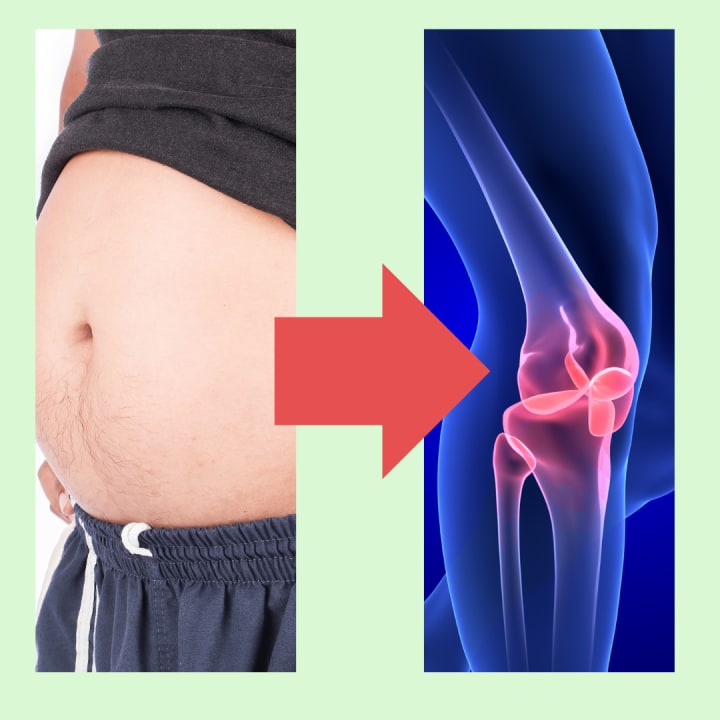Human bones have "shock absorbers" in the joints, just like a car. Its purpose is to relieve pressure when the bones move, such as when you walk or stand. The joints swell and hurt as these cushions become worn out. Defects may develop if it is left unattended for a long time.

The joints that link the bones in the human body act as hinges. Bones can move thanks to joints. Backs, fingers, and hands can all be bent for lifting, walking, and other purposes.
Joints act as hinges by having components that provide easy bone movement. Articular cartilage, which lines the ends of bones that touch other bones, is one of them. This joint cartilage acts as a cushion to relieve pressure and ease joint movement when two bones meet and press against one another. In contrast to a bone shaft, this joint cartilage lacks nerves. Our knees don't pain when we move our legs for this reason.
This cartilage surface is flat and smooth in typical conditions. As a result, the joint moves smoothly when it does. This joint cartilage, however, is weakening or worn out in some individuals. The surface of the joint cartilage becomes uneven and rough when thinning takes place. Joint movement feels unnatural and occasionally even sounds because shock absorbers are less effective. This pressure generates pain since the bones have nerves. The knee will feel quite painful when utilized to walk. Osteoarthritis is the name for this condition.
Rheumatism includes osteoarthritis. Rheumatism is becoming a widespread term used by laypeople to refer to bone discomfort. despite the fact that arthritis comes in numerous forms. Osteoarthritis starts with irregularities in the joint cartilage and can damage any of the elements that make up joints, including bones, muscles, tendons, and ligaments.
New joints will experience slight pain when used for demanding activities like moving heavy objects or climbing stairs. But when it worsens, even simple joint motions like walking cause pain. The joints ache even when you're sitting and sleeping.
Weight-bearing joints, such the knee joint, which is the joint that experiences the most stress, are the joints that osteoarthritis attacks. Osteoarthritis can also affect other joints, including the ankles, hip joints, spine, and the base of the big toe.
What are osteoarthritis's causes and risk factors, then?
Obesity is one of the most important risk factors among the well-known risk factors. The burden on the bones and joints is greater in obese people. The cartilage lining of the joints deteriorates more quickly as a result of the pressure brought on by this constant body weight.
This illness has not yet been cured. Patients who develop osteoarthritis must receive ongoing care. Existing treatments are only capable of enhancing the patient's quality of life, such reducing discomfort. That which was formerly impossible to walk will be rendered capable of walking once again.
Age and gender are two risk factors for osteoarthritis that cannot be changed. However, certain other factors, such diabetes, excessive activity, and obesity, can be managed. We reduce the danger if these variables are managed.
Treatment options for osteoarthritis include surgery, non-pharmacological approaches that do not involve medicines, and lifestyle changes. These non-pharmacological treatments include education, weight loss, and staying away from physically demanding activities. Additionally through physical treatment, such as warmth, assistive technology, and specialized exercises.
Giving painkillers or injecting viscosupplement fluid, which serves as a lubricant and a shock absorber, are examples of pharmacological therapy. Glucosamine and chondroitin sulfate are additional medications frequently prescribed for the treatment of osteoarthritis. Both should be able to mend joints. The use of both pharmaceutical and non-pharmacological therapy is combined.
The subsequent action procedure. Particularly if the joint supports have worn away, this is done. Additionally, it is occasionally used to address risk factors, such as in individuals with O-shaped legs.
Even though it may seem insignificant, losing weight significantly slows the course of osteoarthritis. It is strongly advised to take this activity both before and after osteoarthritis develops. Losing weight would reduce the likelihood of osteoarthritis developing before it manifests. Losing weight is crucial even if you already have osteoarthritis because it can lessen how severe it gets.
Don't be overweight. According to a study, losing 5 kg can cut the risk of knee osteoarthritis in women by 50%, especially in those who are above 10% overweight.
About the Creator
sandi galih
My article is about healthy and fitness . I want to share my article and give advantage for reader






Comments
There are no comments for this story
Be the first to respond and start the conversation.